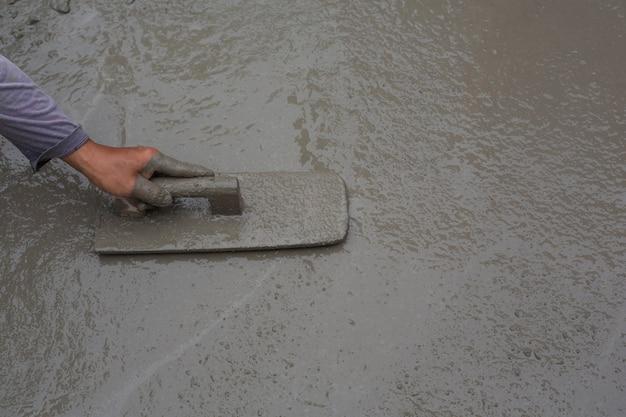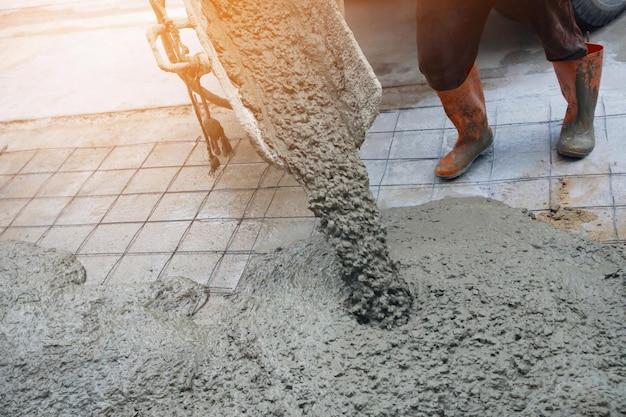So, you’ve just had a fresh concrete driveway or sidewalk installed, and now you’re eager to start using it. But how long do you actually need to wait before driving on it? It’s a common question that many homeowners have, and in this blog post, we’re here to give you the answers.
With our expertise, we’ll explore the curing process of concrete, the factors that affect its strength and durability, and the approximate timeline for when it’s safe to drive on your new concrete surface. We’ll also address common concerns such as rain exposure, watering, and the impact of pets on freshly poured concrete.
Stay tuned as we delve into these important details and provide you with the knowledge you need to navigate this concrete conundrum. By the end of this blog post, you’ll have a clear understanding of whether it’s safe to drive on concrete after just three days or if you’ll need to exercise a little more patience.
So, let’s dive right in and demystify the world of concrete curing!
Can You Drive On Concrete After 3 Days
So, you’ve just had a brand new concrete driveway installed, and you’re eager to take your sweet ride for a spin. But hold on there, Speed Racer! Before you put the pedal to the metal, you need to know that concrete needs time to cure and gain strength. The big question on your mind might be, “Can you drive on concrete after 3 days?” Well, let’s dive into the details and find out!
The Concrete Countdown
After the concrete is poured, it goes through a fascinating transformation process. In the first 24 hours, it starts to harden, but it’s still fragile and needs some tender loving care. On day two, it gains more strength, but you still shouldn’t park any heavy machinery on it just yet. It’s only around day three that the concrete is sturdy enough to support the weight of vehicles, but that doesn’t mean you should go all out just yet.
Patience Is a Virtue
While you might be itching to take your car out for a joyride, it’s important to exercise some patience. Even after three days, the concrete hasn’t reached its full strength. It continues to gain strength over time, reaching about 70-80% of its potential strength after seven days. So, it’s best to hold off on any NASCAR aspirations for at least a week.
Protecting Your Precious Pavement
Concrete may be strong, but it’s not invincible. To ensure the long-lasting beauty and durability of your new driveway, there are a couple of things you should keep in mind. Firstly, avoid making any sudden, sharp turns on the freshly cured concrete. While it’s strong, it can still develop cracks under excessive stress.
Secondly, steer clear of heavy vehicles and equipment for at least a month. You might be thinking, “But my monster truck rally is next weekend!” Well, tough luck, my friend. Heavy loads can cause the concrete to crack and deteriorate prematurely, and trust me, you don’t want to be dealing with that headache.
The Concrete Creed: Cure, Baby, Cure
Now, let’s talk about the cure. No, we’re not going to discuss that catchy song you can’t get out of your head. We’re talking about the process of keeping the concrete moist during its early days. This is crucial for its strength and overall quality. After pouring the concrete, it’s usually covered with a plastic sheet or sprayed with a curing compound to prevent moisture loss. This helps the concrete cure properly, ensuring a solid foundation for all your future driving adventures.
In conclusion, while it might be tempting to rev your engine and speed off in a cloud of dust just a few days after your driveway is poured, patience is key. Concrete needs time to gain strength, and even after three days, it’s still not at its peak. Keep your driving to a minimum for at least a week, and avoid any heavy loads for a month. Treat your concrete with care, and it will reward you with a smooth and durable surface that’ll have your neighbors green with envy. Happy driving!
Frequently Asked Questions about Driving on Concrete After 3 Days
How long should concrete cure before removing forms
The ideal timeframe for removing concrete forms is typically around 24 to 48 hours after pouring. However, this may vary depending on the weather conditions and the specific type of concrete used. It’s essential to consider factors such as temperature and humidity before proceeding with form removal.
Is it okay if it rains after pouring concrete
While rain is certainly not ideal immediately after pouring concrete, a light drizzle shouldn’t cause significant harm. However, heavy rain can have adverse effects on the concrete’s curing process. If heavy rain is forecasted within the first 24 hours after pouring, it’s best to cover the concrete with a waterproof tarp or seek professional advice.
Should you water concrete after it is poured
Watering concrete after pouring is a common practice, as it helps with the curing process. For the first few days, keeping the concrete damp by lightly misting it with water can enhance its strength and durability. However, it’s crucial not to overdo it; excessive water can weaken the concrete.
How strong is concrete after 1 week
Concrete gains strength over time, and after one week of curing, it can achieve around 70% of its estimated strength. However, it’s important to note that the actual strength will depend on various factors, including the specific mix design, curing conditions, and weather conditions. Patience is key when considering the long-term strength of concrete.
How long does it take a concrete driveway to cure
The duration for a concrete driveway to fully cure can vary. Typically, it takes around 28 days for concrete to reach its maximum strength. However, you can drive on a concrete driveway after about 7 to 10 days, as it should have enough strength to handle light traffic. Be cautious during the initial curing period and avoid heavy loads or sudden movements.
How hard is concrete after 3 days
After 3 days, concrete is generally firm and strong enough to support light foot traffic. However, it’s still in the early stages of curing, so it’s essential to avoid placing heavy objects or exerting excessive pressure on it. While you can walk on it, it’s best to refrain from driving vehicles or conducting any activities that could cause damage.
Does concrete take 100 years to cure
Contrary to popular belief, concrete doesn’t actually take 100 years to cure. The curing process mainly occurs during the first 28 days, during which the concrete gains most of its strength. Although concrete continues to strengthen over time, it typically reaches its maximum strength within the first month.
When can pets walk on concrete
Pets should be kept off the newly poured concrete for at least 24 to 48 hours. While their paws can handle the hardness of concrete, their claws may cause scratches or indentations during the initial curing phase. To ensure the best results, it’s always a good idea to consult with your veterinarian for specific guidance based on your pet’s size and breed.
How long should asphalt cure before driving on it
Asphalt, unlike concrete, doesn’t require a prolonged curing period. After installation, it generally takes about 1 to 2 days for asphalt to be ready for light traffic. However, for optimal durability, it’s recommended to wait at least 3 to 5 days before subjecting it to heavy vehicles or intense activities.
How strong is concrete after 1 day
After 1 day, concrete has gained some initial strength, but it is not yet fully cured or hardened. It’s best to avoid any significant surface pressure or traffic on concrete during this early stage. While it may be tempting to test its strength, allowing ample curing time ensures long-lasting durability.
How long should you not drive on a new driveway
To prevent damage and achieve a durable driveway, it’s generally recommended to avoid driving on a new concrete driveway for at least 7 to 10 days. This period allows the concrete to gain sufficient strength to handle vehicle weight. However, it’s always wise to consult with the contractor or follow their specific recommendations for your particular project.
Can I drive on concrete after 2 days
While concrete gains some strength after 2 days, it is still not fully cured or ready to endure the weight of vehicles. It’s crucial to exercise patience and refrain from driving on the concrete until it has had enough time to cure properly. Waiting for at least 7 to 10 days is advised before introducing any vehicular traffic.
Should you wet concrete while curing
Yes, it’s beneficial to keep the concrete damp during the curing process. Mist the concrete with water or cover it with a damp cloth to slow down moisture loss and promote proper hydration. However, be mindful not to overwater, as excessive moisture can negatively affect the strength and integrity of the concrete.
Can I drive on concrete after 5 days
After 5 days, concrete has significantly hardened and can withstand light vehicle traffic. However, it is still important to exercise caution and avoid sudden or heavy loads. To ensure optimal performance and durability of the concrete, waiting a bit longer before subjecting it to heavy use is advisable.
How long before it can rain on concrete
Ideally, you should allow newly poured concrete to cure for at least 24 to 48 hours before exposing it to rain. Rainfall can affect the concrete’s surface, washing away the cement particles and potentially causing surface imperfections or weakening the structure. If rain is expected within this initial curing period, it’s best to take preventive measures, such as covering the concrete with a waterproof tarp.
How long does 4 inches of concrete take to cure
The curing time for 4 inches of concrete depends on various factors like weather conditions, mix design, and ambient temperature. However, as a general guideline, it typically takes around 28 days for concrete to fully cure. Patience and proper care during the curing process will ensure the desired strength and longevity of the concrete.
Can I pour concrete in a hole full of water
Pouring concrete in a hole full of water is generally not recommended. The presence of excessive water can negatively impact the concrete’s strength, potentially resulting in lower structural integrity and durability. It’s best to pump out or drain the water before pouring the concrete to ensure optimal conditions for curing.
What if it rains on new asphalt
If rain falls shortly after new asphalt has been laid, it can have adverse effects on the surface. The rainwater can weaken the newly applied asphalt and affect its bond with the underlying layers. To minimize any damage, it’s important to protect the asphalt from rainfall for the first 24 to 48 hours. Covering the surface with a waterproof material or rescheduling the job may be necessary if heavy rain is expected.
Should you cover concrete with plastic in cold weather
In cold weather conditions, covering freshly poured concrete with plastic can provide some degree of protection. The plastic acts as a barrier, preventing rapid moisture loss and maintaining a suitable temperature for proper curing. However, it’s crucial to ensure that the plastic doesn’t trap excessive moisture, as it can lead to other complications. Consult with professionals for specific recommendations based on the prevailing weather conditions.
How do you speed up concrete curing
While concrete naturally cures over time, a few techniques can help accelerate the process. Ensure proper hydration by misting the concrete surface with water and keeping it damp. Consider using curing compounds or membranes to seal in moisture. Additionally, applying heat through external sources or using insulated blankets can help maintain warmth and expedite curing. However, it’s essential to follow industry guidelines and consult professionals to ensure the integrity and quality of the concrete.

